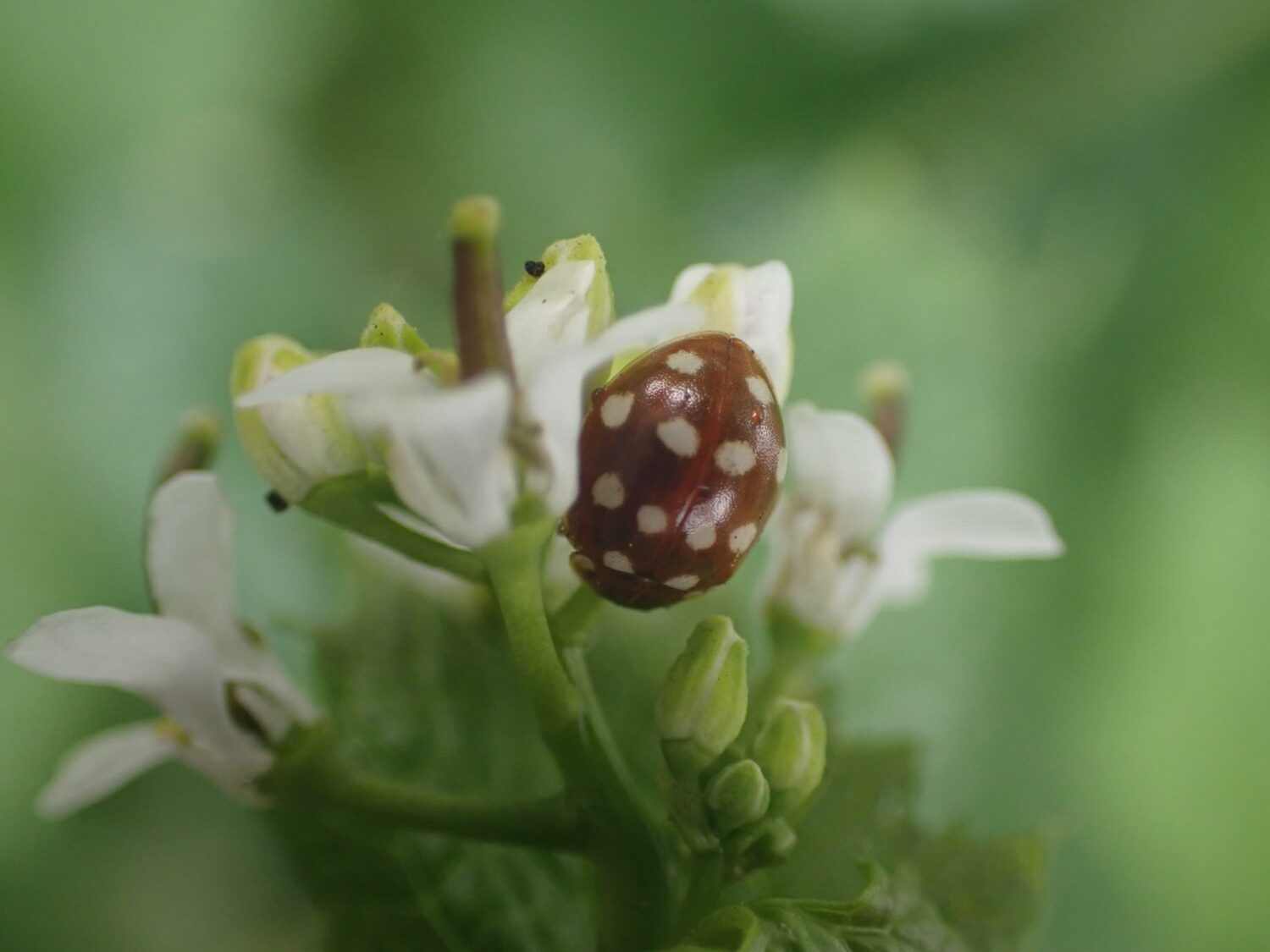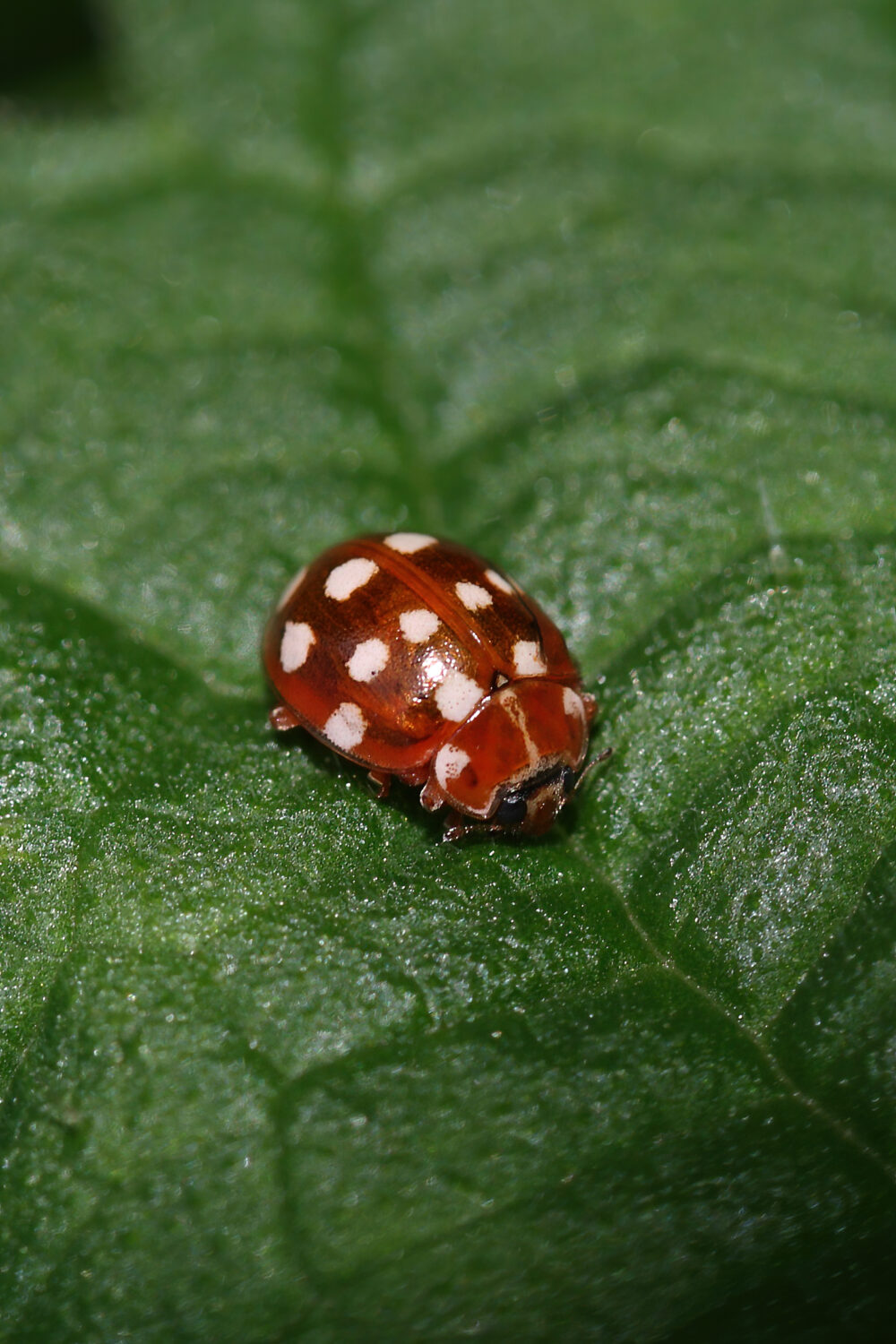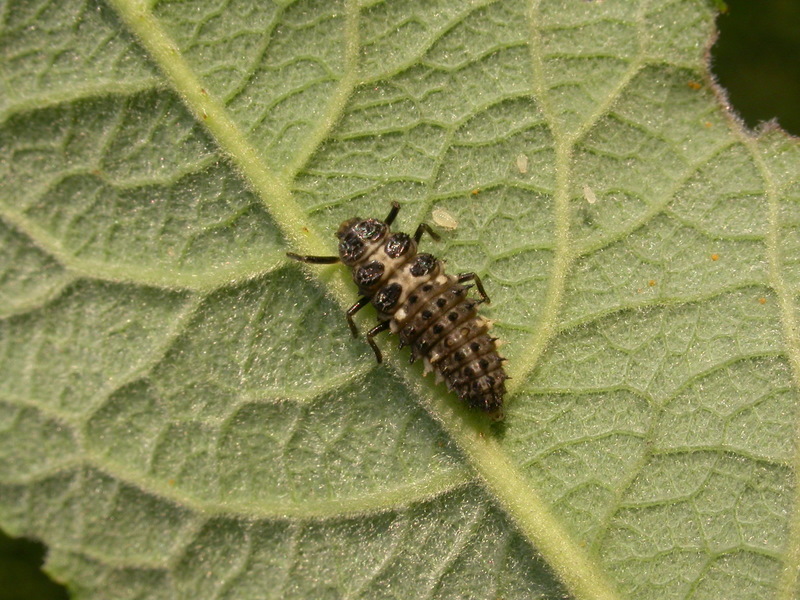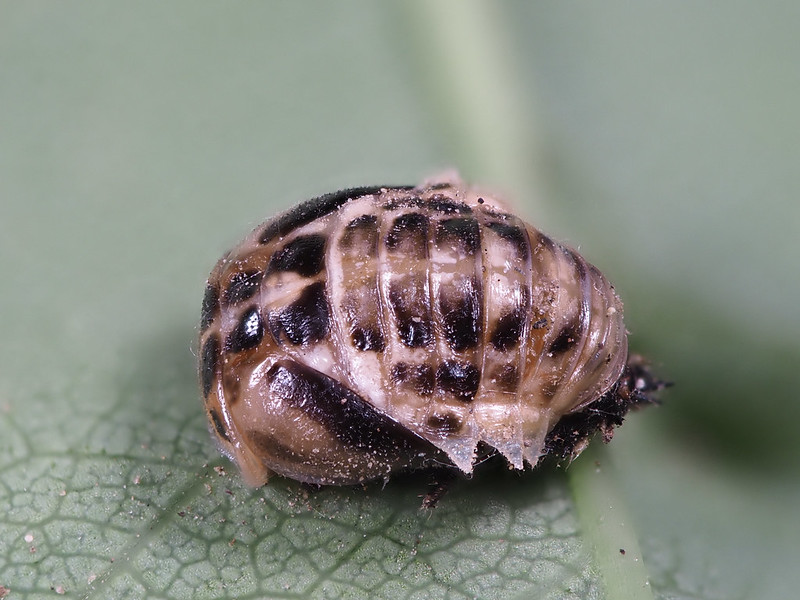A deciduous tree specialist, the Cream-spot Ladybird is a distinctive ladybird with a maroon-brown body and 14 cream-white spots.
Fast facts
- Common name(s)
- Cream-spot Ladybird
- Scientific name
- Calvia quattuordecimguttata
- When to see it
- Year round
- Diet
- Aphids and other soft-bodied insects
Description
A deciduous tree specialist, the Cream-spot Ladybird can be found in woodland, along hedgerows and on shrubs. It is a distinctive ladybird with a maroon-brown body and 14 cream-white spots.
Identification
Adults
Adults have maroon-brown elytra (wing cases) with exactly 14 round cream-white spots. There are also a further two cream spots on the sides of the pronotum (plate behind the head and elytra). The legs are brown. This species is around 4 – 5mm in length.
Larvae
Larve, in their late stage, are dark grey with two pairs of white marks on the first and forth section of the abdomen.
Pupae
Pupae are cream-yellow with longitudinal dark grey markings.
Similar species
The Orange Ladybird also has cream-white spots. However, the Cream-spot Ladybird has darker elytra and is not bright orange like the Orange Ladybird. The Orange Ladybird is a target species of the North East Ladybird Spot and its species profile can be found here.
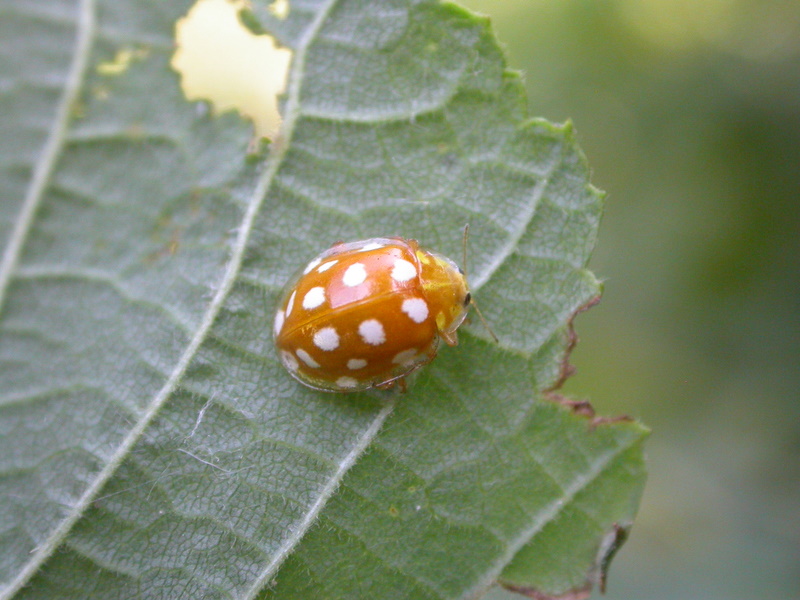
The Orange Ladybird is bright orange © Gilles San Martin
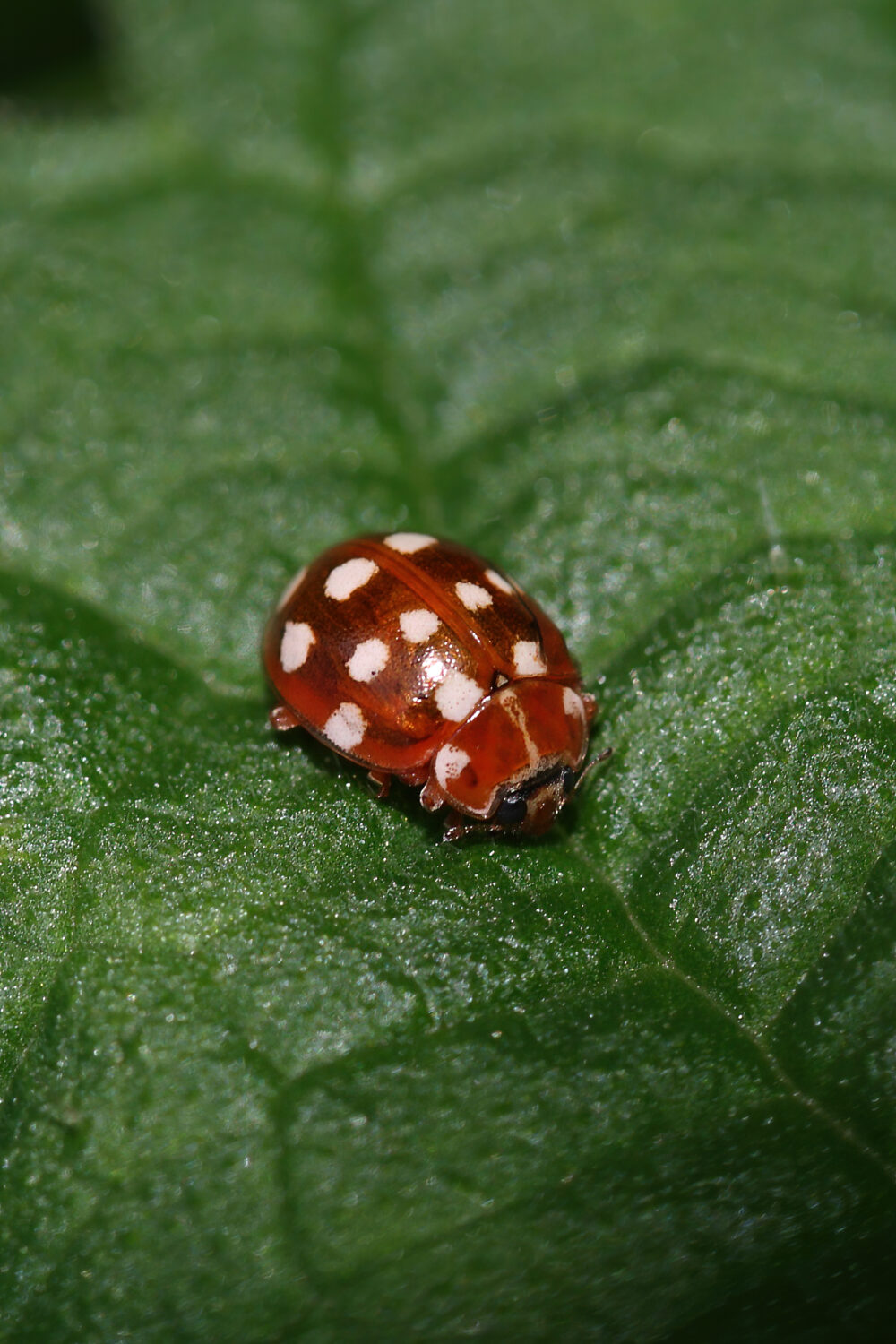
Spotted this ladybird?
Share your sighting of the Cream-spot Ladybird and other North East Bee Hunt target species to contribute to the conservation and study of our region’s ladybirds.
Ecology
The Cream-spot Ladybird feeds on aphids and other soft-bodied insects such as plant lice. It is commonly found in woodland and is a deciduous tree specialist, living on the foliage of broad-leaved trees, hedges and shrubs. It is particularly associated with Ash but is also commonly found on Sycamore and Lime. It can also be found on herbaceous plants such as thistles.
This species overwinters close to the ground in leaf litter, Beech mast and bark crevices.
Did you know?
Visible with a hand lens, females deposit a red waxy substance on the surface of their eggs.
Regional Distribution
The Cream-spot Ladybird is recorded from Northumberland and County Durham. Records are mainly from lowland urban areas but there are also a few upland records. Nationally, this species is widely distributed.
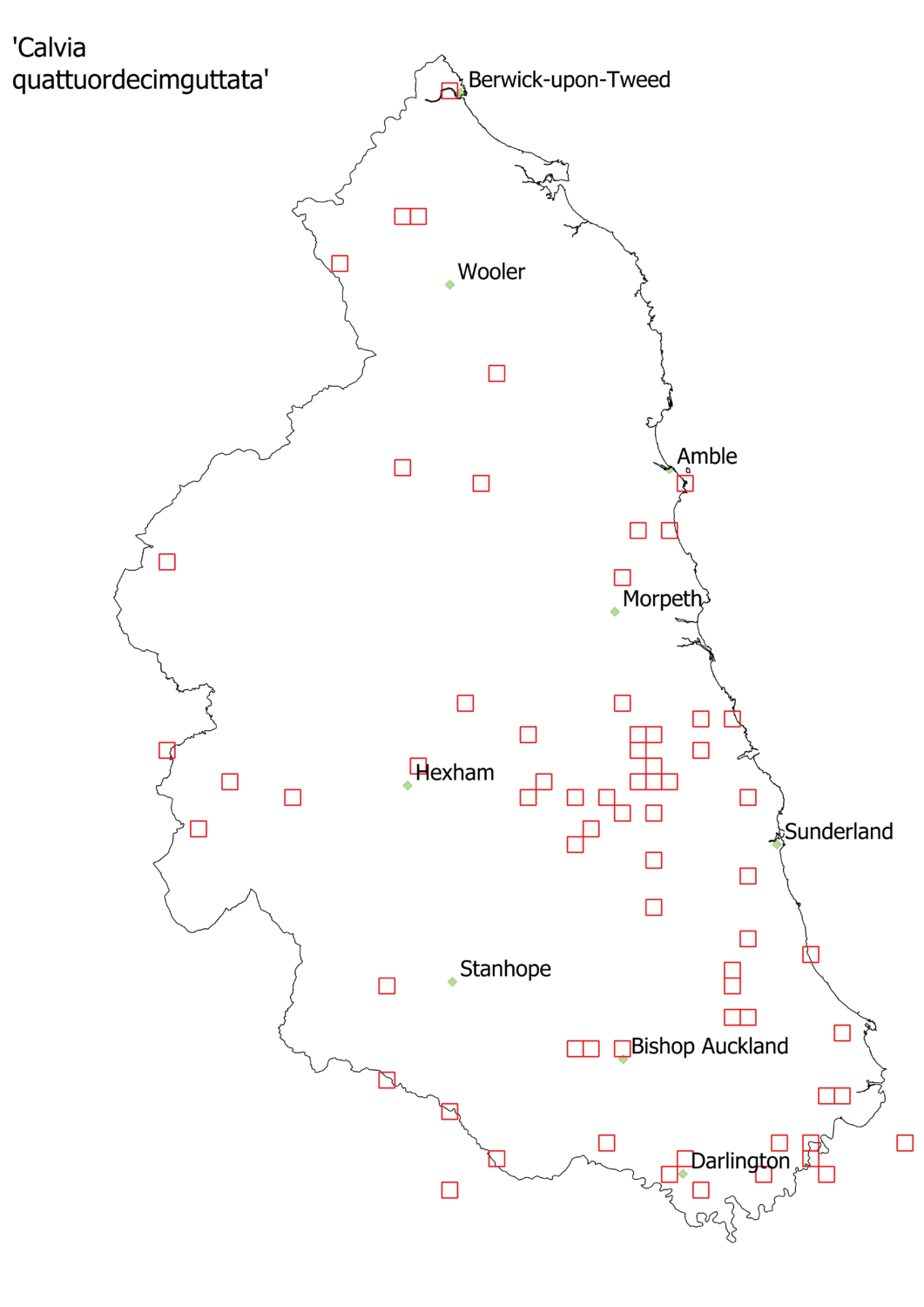
Distribution map of Cream-spot Ladybird (ERIC North East data)
